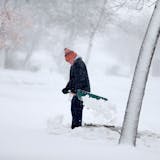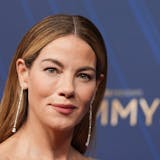Vanessa Berrueta Zambrano followed her instincts this past spring when she felt a lump about the size of a piece of popcorn in her right breast. She knew she needed answers. But her clinic told her that a screening likely wouldn’t be covered by her insurance because at age 39, she was too young.
“I don’t care,” she remembers telling the medical staff. “Do the mammogram.”
Luckily, she insisted. It was breast cancer.
Breast cancer in women between ages 20 and 49 is still rare, with a prevalence of about 65 cases per 100,000 people. But the rate has been steadily ticking upward, with incidence among younger women climbing by nearly 3.8% annually from 2016 to 2019, according to a study published this year in JAMA Network Open. Research shows that women under 40 are more likely to die from their breast cancer than older women.
People like Berrueta fall into a paradox: Even though more younger women are getting breast cancer, mammograms and other screenings aren’t recommended for women under 40. Some speak of feeling dismissed by their primary-care doctors or having to contend with insurance companies, even if they show they carry a higher risk for the disease.
“I don’t know how many times I’ve heard stories of women who have noticed a breast lump, they see their primary care provider, and they’re told, ‘You’re too young to have breast cancer,’ so they don’t do anything about it,” said Dr. Douglas Yee, a medical oncologist who directs the Masonic Cancer Center at the University of Minnesota.
After her diagnosis, Berrueta, of Wayzata, navigated the news and aftermath by doing what she does best: talking and listening. She sought several physicians’ opinions and met with as many survivors as she could, asking them about their biggest treatment-related regrets, how they combatted their fears, what they would do differently and their hopes for the future.
Only six months after her diagnosis, she’s driven to continue holding those conversations. And now any of us can listen in: She recently launched a podcast called “Tetas” (the equivalent of “boobs” in Spanish).


